BACK
TO
WEATHER-BLOG
MENU
New!
Fine
Art
Prints
&
digital
images
for
sale-
Welsh Weather
& Dyfi Valley landscapes Slide-Library - Click HERE
The
three
images
below
record
an
historic moment for mid-Wales. On the
afternoon of Sunday June 5th 2011, the first osprey chicks to hatch on
the Dyfi Estuary in over 400 years began to emerge. CCTV video was
posted to Youtube as the events unfolded: the following three images
are screengrabs from the videos: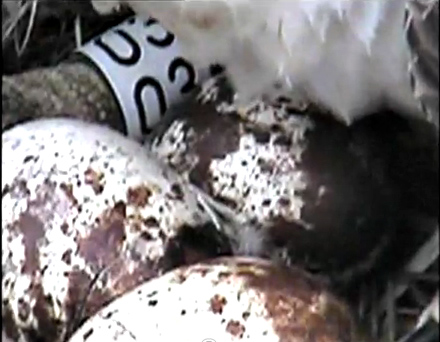 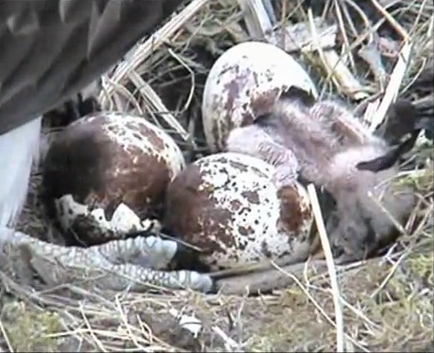 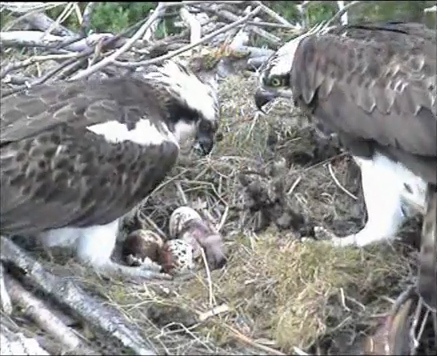 Ospreys are migratory raptors that spend the winter months in Western Africa and then migrate north in Spring to haunts in Scotland and elsewhere. Once, they inhabited much of the UK, but heavy persecution, for example by Victorian egg-collectors, led to them becoming largely absent from the early 20th Century. In the 1950s, they returned to Scotland, with a very gradual recovery: by 1976 there were 14 pairs, but enhanced protection against egg-collectors raised the population to 71 pairs by 1991 and 158 pairs by 2001. In 2005, the Glaslyn Osprey Project near Porthmadog in North Wales saw the first successful Welsh osprey brood raised. Now, ospreys have regularly been seen over the years on the Dyfi Estuary, stopping by for a day or two to hunt the abundant mullet and flounders that they seem partial to, but have typically moved on in time. The big question was: with sufficient encouragement, would they be tempted to stay? In 2007, the Montgomeryshire Wildlife Trust, an independent conservation charity with 10 staff and several dozen dedicated volunteers, constructed an artificial nest - a broad platform strewn with sticks atop a tall wooden pole - at its Cors Dyfi reserve, near the Dyfi Junction railway station, The following April, a male was seen at the nest site and he was joined by a female in June. They spent the next few months at the nest site but did not breed. 2009 and 2010 saw similar activity, but in 2011 a male and female went that extra step and three eggs were laid between April 25th and May 1st. Incubation typically lasts 30-40 days, and after a nailbiting wait, which aptly illustrates the adage "better late than never", the first egg hatched on June 5th, which in my reckoning makes it day 41. The events were reported as they occurred on the project's Facebook page (I'll put relevant links below) and, as the nest is monitored by CCTV, it was only a short wait to see the video online. This represented a tremendous success - the culmination of many years' hard work, of which the osprey headline is just a part - although a very big part! Amongst my collection of well-used and in some cases stained and tattered maps that I keep in my jeep for route-finding when going after thunderstorms, I have a old 1:50,000 Aberystwyth sheet that depicts the reserve as it was (above centre): 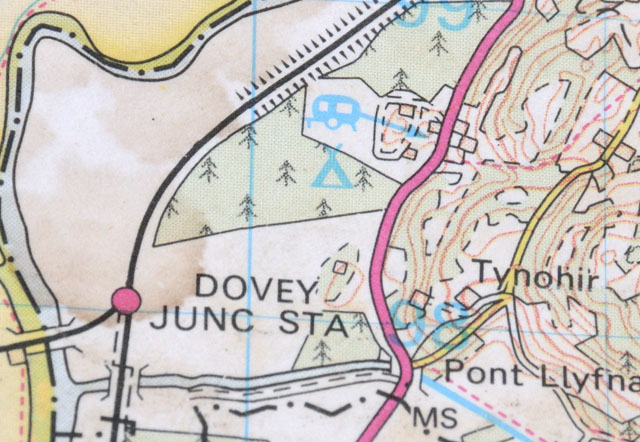 A dreary plantation of conifer forest, it was clearfelled, the drainage ditches blocked and in time the wetland vegetation that one might expect to find in such a place recolonised the land. Today, it is a beautiful expanse of wet woodland and marshes dotted with pools fringed by rushes and yellow flag iris. The Trust have made part of the reserve easily accessible to all by constructing a boardwalk pathway that permits dry progress through what is a very boggy tract: 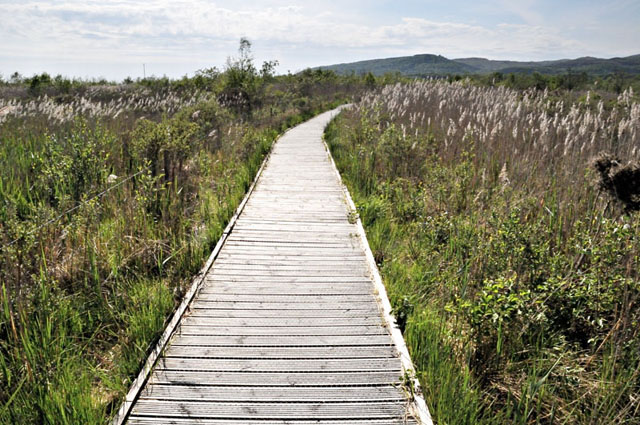 This is a typical view from the boardwalk. Swathes of rushes sway gently in the breeze, with stands of birch and sallow dotted here and there. Tarrenhendre forms the backdrop, on the other side of the river. On a still, warm afternoon, the air is fragrant with the scent of bog myrtle - also known as sweet gale - whose shrubby bushes are clustered thickly in places. Small birds - various warblers and buntings - dart here and there through the undergrowth..... 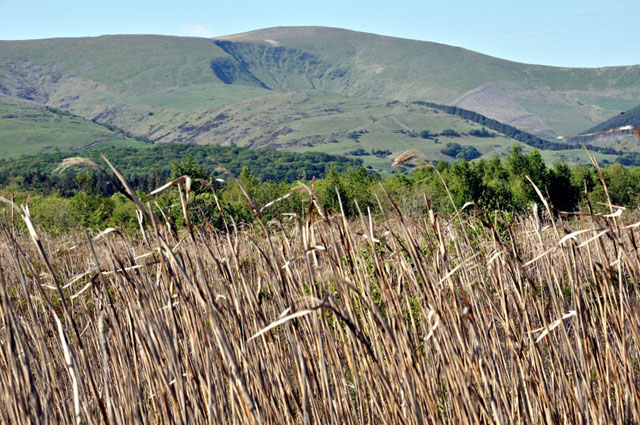 In places, larger pools have been dug...... 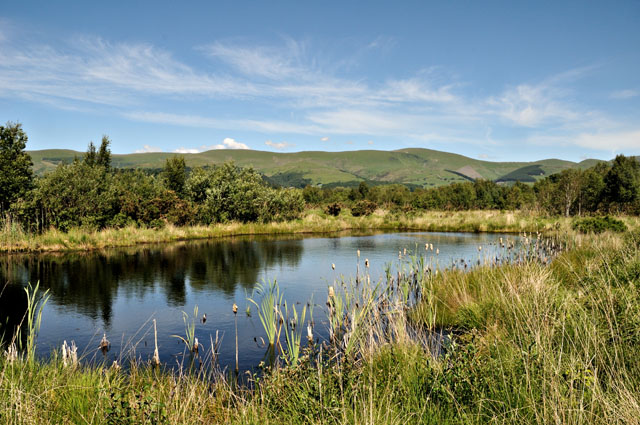 On a warm Spring or Summer day, dozens of dragonflies can be seen zigzagging about at breakneck speed over the surface of the water, presenting a very difficult photographic challenge....  Occasionally, they pause for long enough to permit a clearer image! 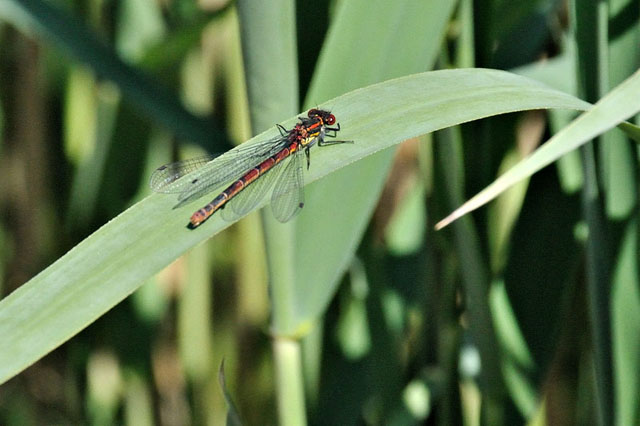 Yellow flag iris provides a burst of colour in May and June: 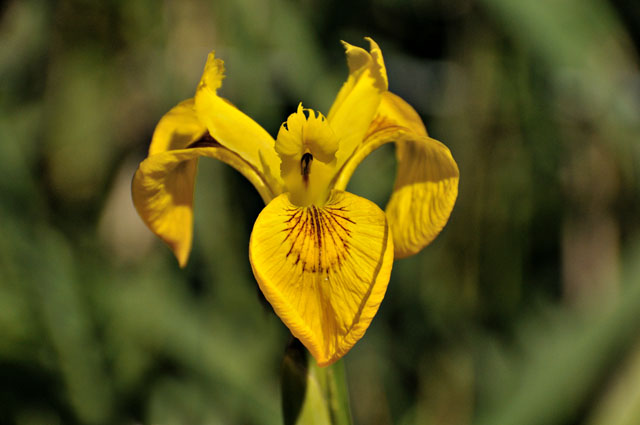 At the end of the boardwalk, the nesting platform is visible across the expanse of pools and swamp... 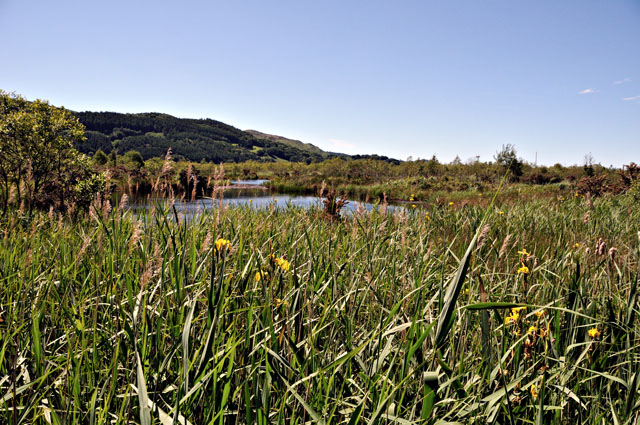 This is a severe digital crop of a telephoto shot (200mm), so that without an embarrassingly long lens you would get little detail here.... 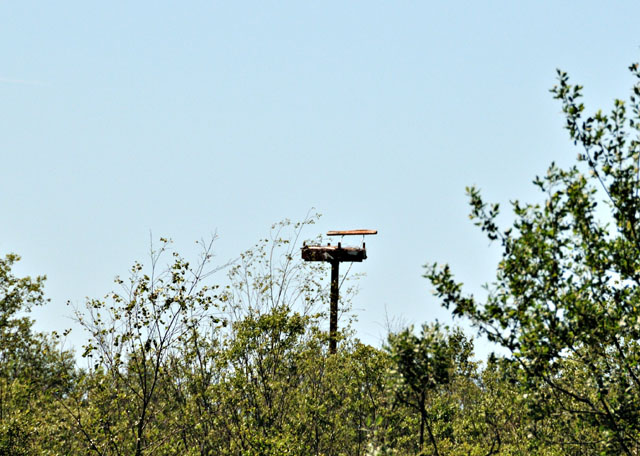 The Trust have provided an excellent solution to that, with this purpose-built hide, equipped with top-notch telescopes and binoculars..... 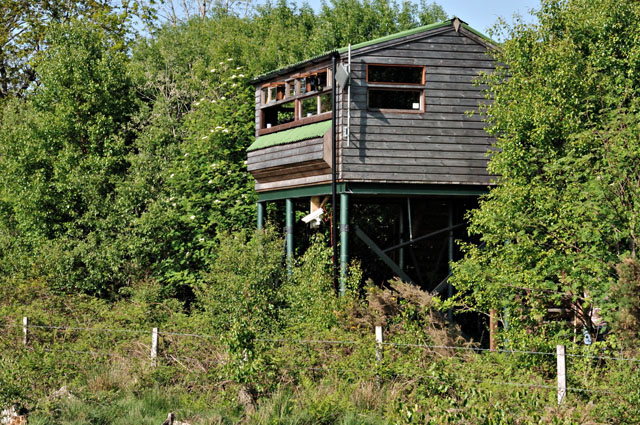 Even better, next door is the Visitor Centre, where large, wall-mounted monitors display the live CCTV footage of the nest:  I can thoroughly recommend a visit to this superb reserve, one of several in the area - the Trust alone manages 19 reserves, whilst the Countryside Council for Wales (CCW) and the RSPB are other key players. CCW manage the famous sand-dunes at Ynyslas, which are in their prime in early summer, with the drifts of marsh-orchids, some tall and graceful amongst the deeper grass.... 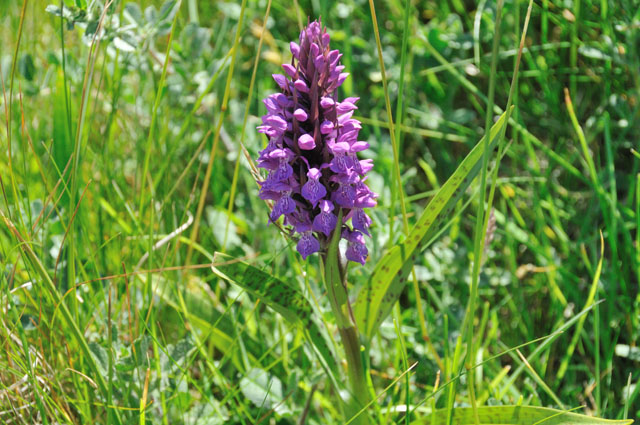 ....and others more squat in areas heavily cropped by the substantial rabbit population.  More colour is added by the common blue butterflies that abound in early June: 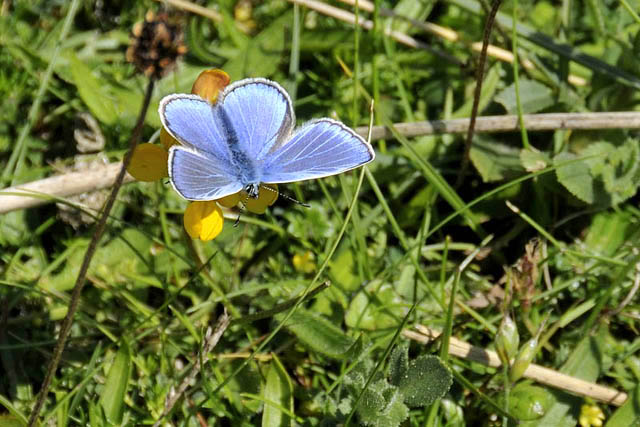 Here's the view back along the boardwalk that crosses the high dunes, looking up the Estuary:  The boardwalk passes a huge blowout, where the prevailing westerly winds have blasted their way into a dune (somebody popped up top L to add scale!)...  The boardwalk leads on to the open beach, here busy with visitors on a warm early June day - a far cry from the typical scene during my usual visits, when the sky is full of dramatic storm-clouds or the sands are deserted due to the antisocial hours I keep when fishing! 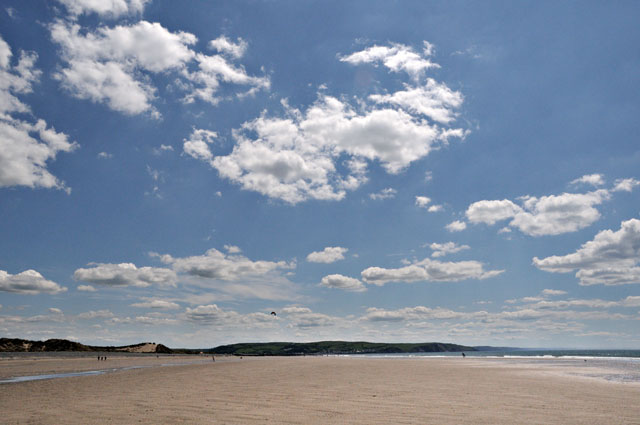 But such superb early summer weather has to be savoured - despite some silly tabloid stories about endless heatwaves, the charts continue to show a right old mixed-bag in the days to come! On June 2nd, to make the most of a fine forecast for the day, I headed up to NW Wales - the first trip this year. I left home at 6 and was fishing at a mark near Pwllheli before the Today Programme had finished. Here's the view back towards the mountains of Snowdonia:  That spot failed to deliver, so I continued west and by mid-morning was heading for the rocks of Bardsey Sound, beyond Aberdaron: 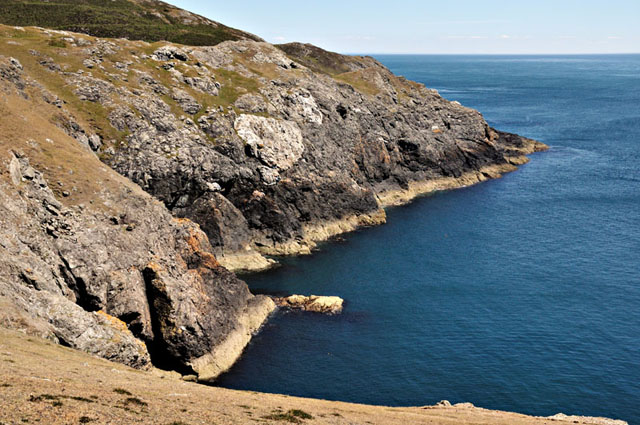 Despite the rough weather of late, the water was gin-clear and I set up two rods with different lures to see what would be on the feed once the riptide set in on the ebb: 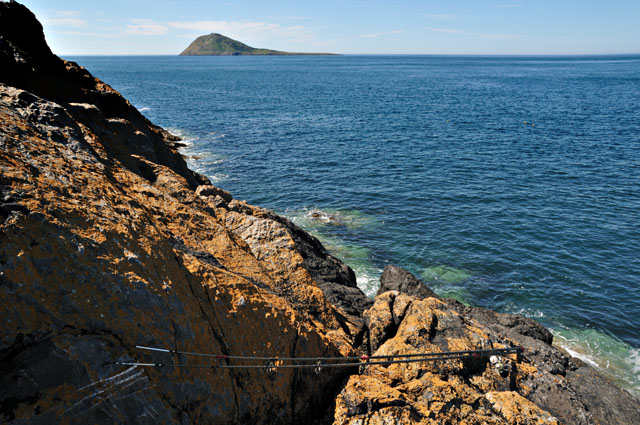 Conditions were flat-calm, an unusual thing at this 5-knot plus rip that can generate awesome stopper-waves several metres high when there is any swell - just as well for the venturesome occupants of this rather small dinghy! Bardsey Sound has a notorious reputation due to its severe currents and has claimed many lives - it is no place for the inexperienced.... 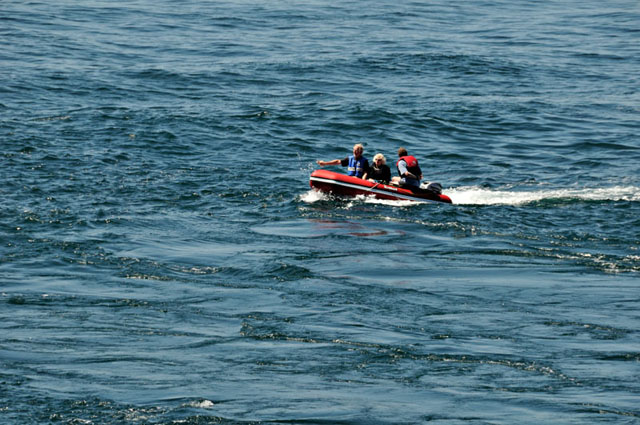 As if to confirm that Summer had indeed arrived, I was rewarded with my first mackerel of the year within an hour of starting, plus a steady stream of pollack and coalfish.... 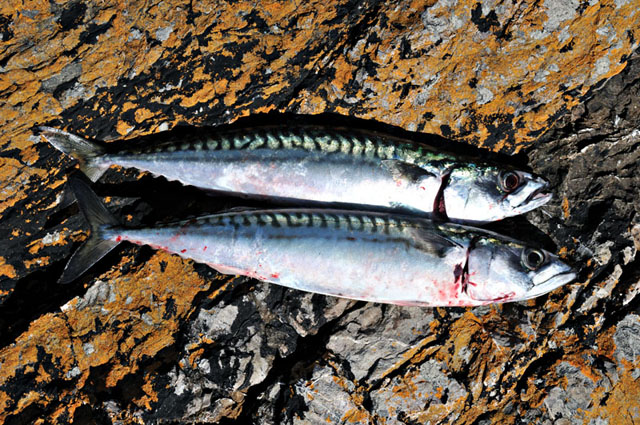 So what is in store for the next few weeks? Well, it's good news for some in that more vitally-needed rain is a possibility for areas that have seen a woeful lack of it in recent months. The theme out to mid-month (I don't hold with looking to more than a fortnight ahead) is generally unsettled, in stark contrast to some headlines of late, which, it should be noted, have absolutely nothing to do with the Met Office! For me, the unsettled conditions will mean more slug-reduction activity - I walked over to the garden at 0300 one morning last week and by torchlight I collected 40-50 of the little beggars. But slugs aside, the garden is managing OK so far, and with Common Blue and Small Heath sighted last week it's now up to 11 species of butterflies - and that's without the Cabbage Whites! Here are some links for anybody wishing to follow the progress of the Osprey Project: http://www.facebook.com/dyfiospreyproject - updated regularly every day, with links to videos. http://www.montwt.co.uk/cors_dyfi.html - Montgomery Wildlife Trust's page on the Cors Dyfi reserve, with directions and other useful information for anybody wanting to visit - and it is well worth it. |
|
BACK TO WEATHER-BLOG MENU New! Fine Art Prints & digital images for sale- Welsh Weather & Dyfi Valley landscapes Slide-Library - Click HERE |